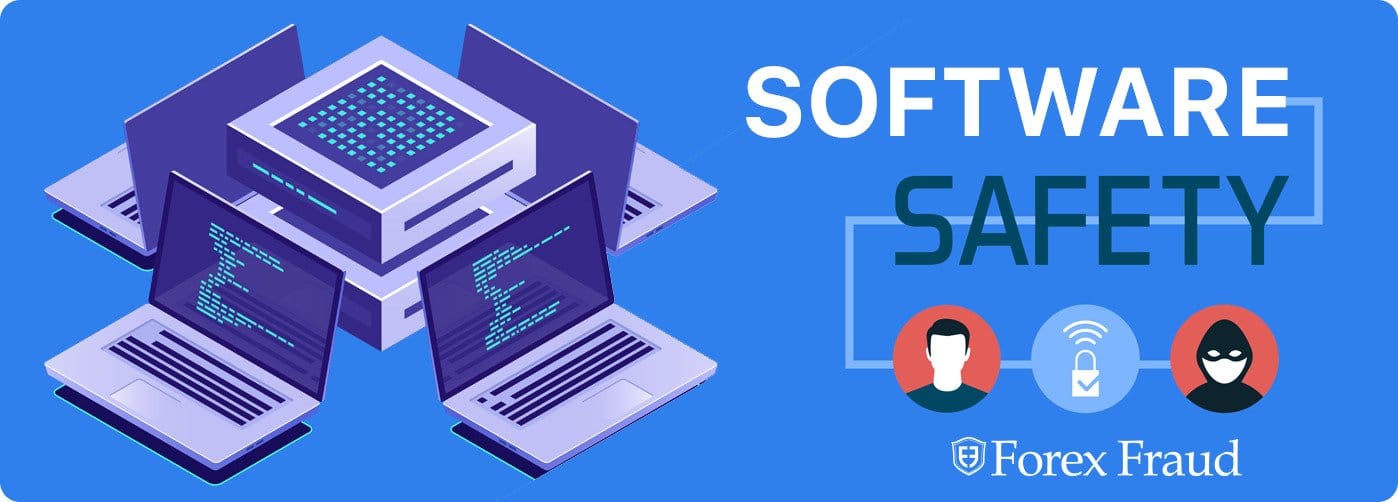
The foreign exchange market, also known as ‘forex’, is the largest exchange in the world, surpassing the stock exchange. As of 2019, the market has a daily trading volume of $6.6 million. This particular market is unique in that, unlike the stock market that trades in various securities, forex trades in national currencies, trading one against another.
Investors use forex to hedge against interest rates and international currency risks. It can also be used to speculate on global political events and as a strategy for diversifying a portfolio. In the case of corporations, the forex markets are a tool for hedging currency risk involving foreign transactions.
Reviews of recommended Forex Brokers >> Forex Brokers to avoid >>
The market is also used by individual investors, called retail traders, who form a small percentage of the forex market’s trading volume. These investors typically use the market for day trading and speculation. For investors new to the forex market, there is much to understand before getting started. The first thing, though, is to learn about the various technologies that many of today’s traders use when trading in the forex market.
This article will cover the different types of forex trading software available, the various forex trading platforms, and the top forex trading broker reviews for 2022. We will also discuss forex charting software and automated forex trading software and how these tools can make navigating the forex market easier.
What is Forex Trading Software?
This software provides access to traders in the forex markets. It is a mobile app, online, web-based portal, a standalone program, or a mix of three different types. Today’s traders have access to automated forex trading platforms as well. The platforms use programs that analyse currency price charts and market activity over multiple time frames. This software generates data related to price trends, market news that impacts trading, and spread discrepancies. Such programs make it possible for traders to make the most profitable currency trades. Users should also be clearly aware of the possibility of losses while trading.
Forex Trading Platforms
MetaTrader 4 (MT4)
This automated trading platform allows users access to flexible trading systems and technical analysis. Developed by MetaQuotes in 2005, MT4 is used not only in the forex markets but also with cryptocurrencies, commodities, and indices. The platform is widely used because it offers users customisable trading preferences the user sets.
MetaTrader (MT5)
MT5 is another trading platform available, but this platform accesses the forex, stock, and futures markets. Users have at their disposal the technical and fundamental analysis of the market, algorithmic and copy trading, trading robots, and the ability to develop custom technical indicators. The robots can analyse currency quotes and then execute trades.
cTrader
This trading platform is billed as the one for forex and CFD brokers and offers a host of features, including trading robots that can execute automated trades based on an algorithm. Its trading features include rich charting tools, level II pricing, and the ability to execute trades quickly. It also allows users to broadcast their trading strategy for a fee or based on a commission. These are just a few of the many features available to users.
ProRealTime
ProRealTime is a platform that has developed significantly over recent years, and particularly in European markets. Detailed charting, and various additional features make this software slightly more suited to advanced traders than beginners. Offering integration with a few particular brokers, including IG, this could be one to watch in future years,
TradingView
What was once seemingly a piece of charting software has evolved into an integrated platform that brokers seem to be added faster than many others in recent years. Now becoming synonymous in trading circles, TradingView is definitely worth a test. Brokers including Pepperstone, Eightcap, Exness, and many more can now boast integration for their clients, with some offering free subscriptions depending on meeting certain conditions.
eToro
A forex trading platform, eToro offers similar features as the above trading platforms but also has social investing features, for example, CopyTrader. This feature allows traders to find other investors to track and copy trades using a star system, performance indicators, and coin interests. However, this feature can only be used with cryptocurrencies.
Plus500
Plus500* provides traders with contracts for difference (CFDs). These CFDs can be used with forex, commodities, ETFs, options and indices.
*80% of retail investor accounts lose money when trading CFDs with this provider. You should consider whether you can afford to take the high risk of losing your money.
What to look for in a Trading Platform
The above listing is an example of the available trading platforms, but investors should consider a few factors before choosing one to ensure it meets their specific needs. An essential factor in making a choice is considering carefully what they require from the platform and what features are unnecessary for their level. For example, a person with little forex knowledge might need a platform that provides guidance, so educational tools and demo trading will be essential. Alternatively, a seasoned investor might go with a platform that offers more advanced features, such as advanced charting, conditional order options, and the ability to trade multiple instruments (forex, derivatives, futures, etc.).
When choosing a forex platform, the prospective investor must also consider transaction fees and the level of security these brokers offer. For example, some platforms have integrated two-way authentication, which adds an extra layer of protection for users. Besides security, investors should also be sure to understand if the platform is fee-based and if it requires deposit minimums.
Finally, traders should be aware that, like any financial sector, the forex market can be prone to scams. Taking the time to conduct thorough research and determining a trading platform’s legitimacy is an extremely important step and one that every trader should make before investing their hard-earned money.
The Best Forex Brokers for 2023
| Broker | |||||
|---|---|---|---|---|---|
| #1 |
|
– Regulated by FCA, FSCA, CMA and FSC – Over 1M Registered Accounts – More than 250 Trading Instruments – MT4, MT5 and Web Trader Platforms – No dealing desk – Crypto-trading only avail. for Exinity Limited. | $200 | ECN 0.1, Standard 1.6 | |
| #2 |
|
– Flexible leverage up to 500:1 |
$200 | From 0.1 | |
| #3 |
|
– 40% New Member Bonus
|
$100 | Fixed | |
| #4 |
|
|
100GBP/AUD/EUR/USD | variable | |
| #5 |
|
|
$200 | NDD 0.09 / Standard 0.69 | |
| #6 |
|
|
$50 (varying by Country) | from 1 | |
| #7 |
|
|
$5 | From 0.0 pips | |
| #8 |
|
– CySEC, FCA, FSCA, SCB Regulated |
$100 | ||
|
|
|||||
Forex Charting Software
Charting software allows forex traders to analyse trends in the currency market, in addition to timed trades. Users can see a currency’s history, technical patterns, and overlays over multiple time frames. These tools make customising transactions easier for users. Information related to closing prices, opening prices, and high and low price points are usually displayed as a line chart, bar chart, or candlestick.
Using charting software offers a host of benefits for investors compared with only using a trading platform. First and foremost, it allows investors to get a clear visual of historical trends to make future decisions. Charting enables users to spot patterns using algorithms, a tool that can assist an investor with knowing when a trade is advisable. Investors can also use this tool to make comparisons with other currencies. Ultimately, users can make objective decisions about the stock they want to trade.
When looking at charting software, pay attention to user-friendliness, which makes it simple to set up and use. Also, look for a platform that offers the features that you need. For example, some features include customisable alerts, advanced charting options, the ability to make trades while on the chart, and intelligent pattern recognition, among other features.
Other important features to look for in charting software are customisability and timeliness. If you want to build your platform to suit your taste, consider looking for a charting platform that allows users to customise the program. Also, because charting is an integral part of decision-making, a charting program that provides real-time data is the only way to go. Finally, while it is not the end-all, a platform that offers a mobile app makes it possible to access information from any location.
Today, there are several different charting software options available. TradingView, for example, is a trading and social networking platform with 30 million traders every month. GoCharting is another platform offering users access to charting across all asset classes online or through mobile. MT4 and MT5 offer charting capabilities as well.
Plus500* is another platform with charting features incorporated into its software program. These tools include advanced features for technical analysis, for example, indicators and drawing tools.
*80% of retail investor accounts lose money when trading CFDs with this provider. You should consider whether you can afford to take the high risk of losing your money.
Automated Forex Trading Software
Within the category of forex trading software, there is automated forex trading software, which makes trading time efficient and convenient. This trading is also called robot (robo), black box, or algorithmic trading and allows an investor to trade without physically being on the trading platform. The way these platforms work is to help users gain the most profitability from their trades by allowing them to pre-set parameters that the user plugs into the system. One benefit of relying on automated forex trading software is that it takes the emotion out of trade transactions.
This technology is available on platforms such as MT4. MT4’s expert advisors use algorithms to monitor and make trades on the market. They also find opportunities for users to make a profit, and users can set the parameters for making trades, or the platform sends out alerts to them. The platform uses yes/no decisions to make trading decisions.
Another platform that offers automated forex trading is AvaTrade. This platform also comes with EA compatibility that assists users with setting parameters for automatic trades. This company also has social trading features that allow users to share their trading information with other investors on the platform.
Final Words
Forex trading continues to evolve as a platform for generating income. Today’s traders have numerous tools and instruments at their disposal to make profitable decisions. However, they must also be aware of the possibility of losses while trading. The benefits of using this software include accessing market news, educational material, and, depending on the platform, data that makes decision-making simple.
Another tool available to forex investors is charting tools. This software provides users with real-time information about currencies, in addition to allowing users the ability to analyse the history of a currency. Like standard forex software, some platforms allow users to share and receive information with other investors.
Within these tech offerings, automated forex programs allow users to trade without being physically present. In essence, it lets users set the pace of the trades, given all the relevant information, and the program then follows these parameters to make trading decisions.
Regarding what platforms to choose, the online trading community offers numerous resources to assist investors, from the novice to the seasoned investor, in finding the best possible programs.
Latest news
Forex vs Crypto: What’s Better For Beginner Traders?
Three Great Technical Analysis Tools for Forex Trading
Trusted brokers
Stay up to date with the latest Forex scam alerts
Sign up to receive our up-to-date broker reviews, new fraud warnings and special offers direct to your inbox

